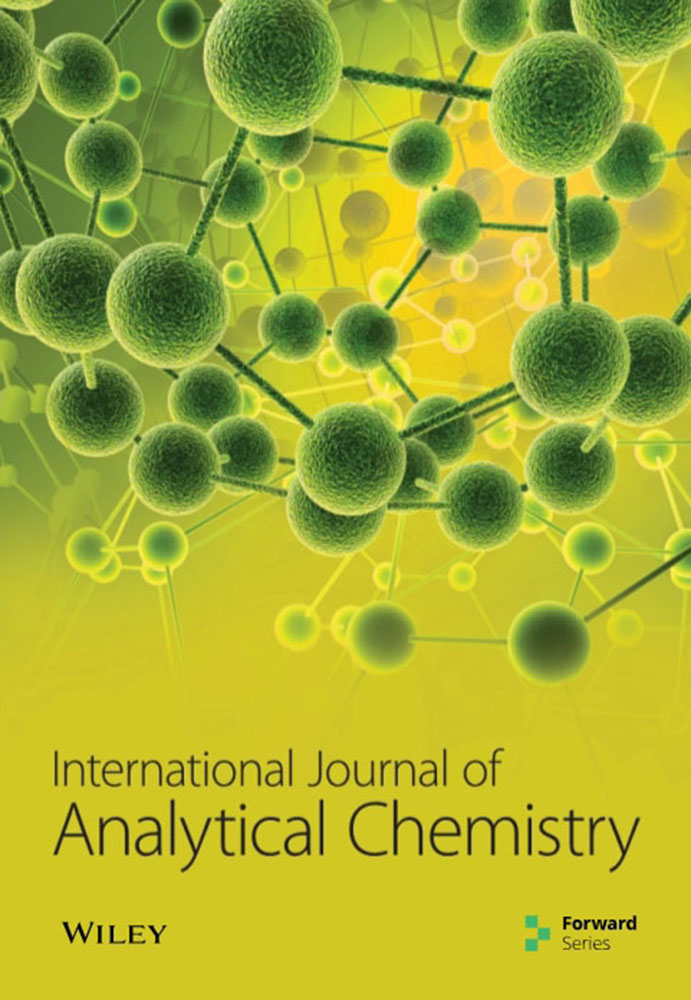五倍子中角五倍子和腹五倍子的化学指纹分析和含量测定
IF 1.5
4区 化学
Q3 CHEMISTRY, ANALYTICAL
引用次数: 0
摘要
建立一种客观、全面的方法来分析五倍子(GC)中角五倍子(HG)和腹五倍子(BG)之间的联系和差异。对 15 批 HG 和 15 批 BG 进行高效液相色谱指纹图谱分析,并建立了相似性分析(SA)、层次聚类分析(HCA)、主成分分析(PCA)和正交偏最小二乘判别分析(OPLS-DA)等化学计量学分析方法。结果表明,所有批次样品的相似度均大于 0.9。在指纹图谱分析中,通过与标准化合物的比较,发现了 8 个明显的共性峰,其中包括没食子酸(GA)、1,3,6-三-O-配糖体-β-D-葡萄糖(TGG)和 1,2,3,4,6-O-配糖体-D-葡萄糖(PGG)。同时,样品被清晰地分为 HG 和 BG 两类。该研究表明,高效液相色谱指纹图谱结合化学计量分析法可用于鉴别 HG 和 BG,并快速评价 HG 和 BG 的品质,为 GC 原料的选择和后续使用提供了一定的实验依据。本文章由计算机程序翻译,如有差异,请以英文原文为准。
Chemical Fingerprint Analysis and Content Determination of Horned Gallnut and Bellied Gallnut in Galla Chinensis
To establish an objective and comprehensive methodology to analyse the connections and differences between horned gallnut (HG) and bellied gallnut (BG) in Galla Chinensis (GC). The HPLC fingerprints from 15 batches of HG and 15 batches of BG were performed, and chemometric analysis including similarity analysis (SA), hierarchical clustering analysis (HCA), principal component analysis (PCA), and orthogonal partial least squares discrimination analysis (OPLS-DA) was also set up. The results showed that the similarity of all batch samples was more than 0.9. In fingerprint analysis, 8 distinct common peaks were detected, among which gallic acid (GA), 1,3,6-tri-O-galloyl-β-D-glucose (TGG), and 1,2,3,4,6-O-galloyl-D-glucose (PGG) were identified by comparing with the standard compounds. Meanwhile, samples were clearly grouped into two classifications corresponding to HG and BG. This study demonstrated that HPLC fingerprints coupled with chemometric analysis could be applied to discriminate HG and BG and evaluate the qualities of HG and BG rapidly, which provided a certain experimental basis for the selection of GC raw materials and subsequent use.
求助全文
通过发布文献求助,成功后即可免费获取论文全文。
去求助
来源期刊

International Journal of Analytical Chemistry
CHEMISTRY, ANALYTICAL-
CiteScore
3.10
自引率
5.60%
发文量
117
期刊介绍:
International Journal of Analytical Chemistry publishes original research articles that report new experimental results and methods, especially in relation to important analytes, difficult matrices, and topical samples. Investigations may be fundamental, or else related to specific applications; examples being biological, environmental and food testing, and analysis in chemical synthesis and materials processing.
As well as original research, the International Journal of Analytical Chemistry also publishes focused review articles that examine the state of the art, identify emerging trends, and suggest future directions for developing fields.
 求助内容:
求助内容: 应助结果提醒方式:
应助结果提醒方式:


